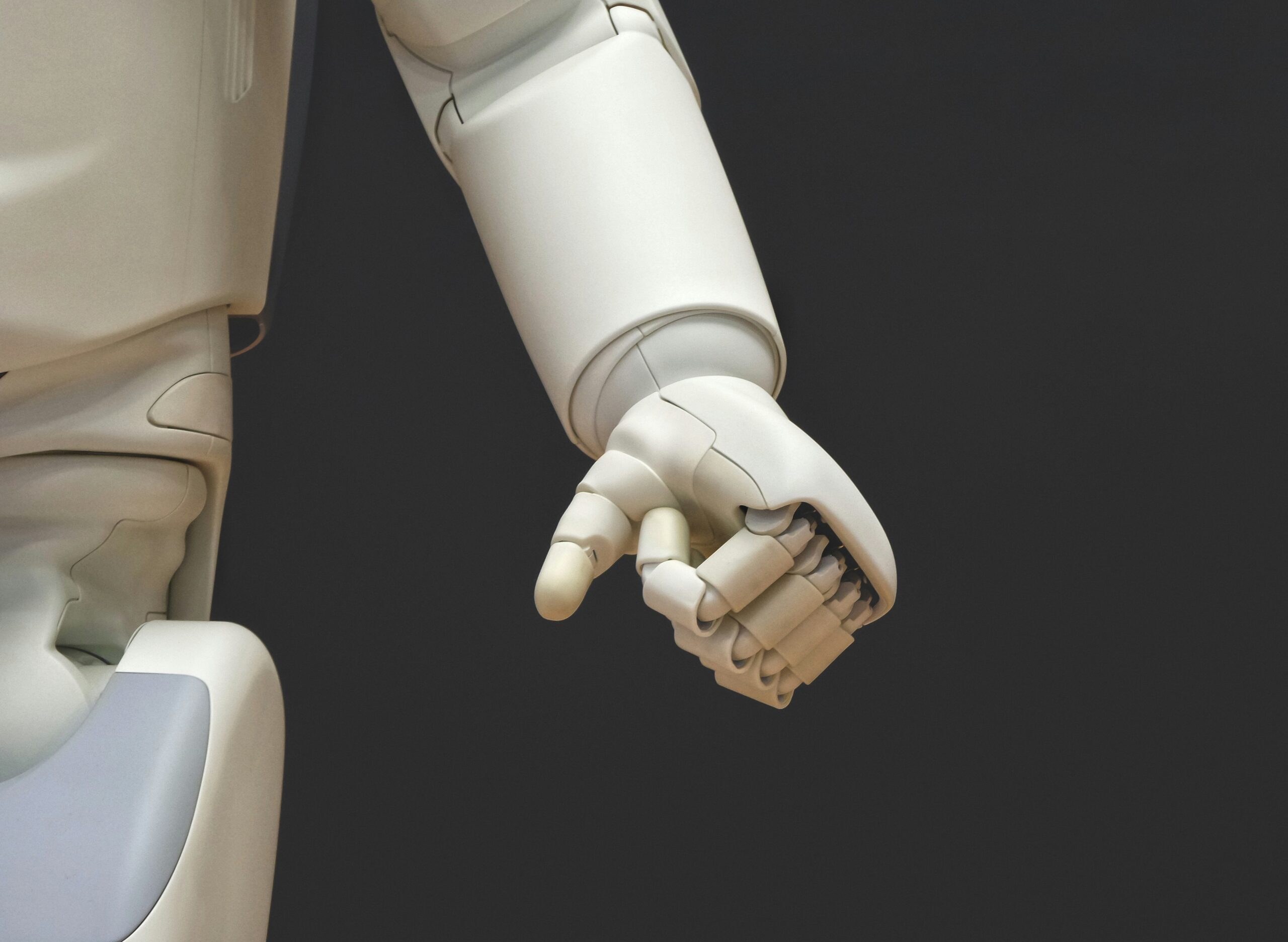Augmented Intelligence: The New AI Revolution

Understanding Augmented Intelligence
Augmented intelligence, often distinguished from traditional artificial intelligence (AI), represents a paradigm shift towards collaboration between human cognition and machine learning systems. Unlike traditional AI which primarily seeks to emulate human intelligence and, at times, fully automate tasks, augmented intelligence emphasizes enhancing human decision-making through symbiotic relationships with advanced algorithms and computational power.
This collaborative approach has its roots in the historical evolution of AI. In its early stages, AI focused on creating systems that could independently perform complex tasks, often in pursuit of replacing human roles. This approach led to significant advancements in areas such as natural language processing, computer vision, and autonomous systems. However, as the limitations of these systems emerged, researchers began exploring more integrative frameworks that leverage both human expertise and machine efficiency.
Augmented intelligence reflects a more holistic view of technology’s role in society. Rather than seeing human and machine capabilities as mutually exclusive, it advocates for their harmonious interaction. For instance, in the field of healthcare, augmented intelligence systems can process vast amounts of medical data to assist doctors in diagnosing diseases more accurately. Similarly, in financial services, these systems aid analysts by rapidly sifting through data to provide actionable insights, thereby improving decision-making processes.
Furthermore, the shift towards augmentation aligns with broader trends in technology adoption and innovation. As industries become more data-driven, the need for systems that can enhance human analytical capabilities becomes increasingly critical. By integrating machine learning and artificial intelligence tools with human judgment, organizations can achieve superior outcomes and foster a culture of continuous improvement.
Overall, the evolution towards augmented intelligence signifies a more nuanced understanding of AI’s potential. It recognizes that while machines can process and analyze data at unparalleled speeds, human intuition and contextual understanding remain irreplaceable assets. This synergy between human and artificial intelligence heralds a new era where technology not only complements human skill sets but also elevates them to new heights.
Human + Machine: A Symbiotic Relationship
Augmented intelligence, the harmonious collaboration between human intelligence and machine intelligence, is revolutionizing various industries by leveraging the complementary strengths of both entities. In healthcare, for instance, advanced algorithms and machine learning techniques analyze vast datasets to identify patterns and make predictive diagnoses, allowing physicians to concentrate on patient care and complex decision-making. This synergy enhances diagnostic accuracy and operational efficiency, ultimately improving patient outcomes.
In the realm of education, augmented intelligence supports personalized learning experiences. AI-driven platforms analyze student data to tailor educational content and suggest resources that cater to individual learning styles. Educators can then focus on interactive teaching methods and addressing unique student needs, fostering a more dynamic and engaging learning environment.
The finance industry also benefits immensely from augmented intelligence. Financial institutions use AI to process and analyze large volumes of transactional data, detecting fraud patterns and providing real-time risk assessments. This capability not only safeguards assets but also allows financial experts to devise more strategic investment plans and customer-centric solutions.
Customer service is another sector where augmented intelligence shines. AI-powered chatbots and virtual assistants manage routine inquiries and troubleshoot common issues, offering rapid responses and freeing up human agents to handle more complex and nuanced customer interactions. This dual approach enhances overall customer satisfaction and operational effectiveness.
Moreover, the ability of machines to handle repetitive tasks and process enormous amounts of data efficiently complements human creativity and strategic thinking. While AI excels in data analysis and repetitive processes, humans bring contextual understanding, ethical considerations, and innovative problem-solving to the table. Together, they create a potent combination that drives progress and innovation across various fields.
The integration of augmented intelligence across these industries exemplifies its transformative potential. By allowing machines to handle tasks that are data-intensive and repetitive, humans can direct their energy towards creativity and complex decision-making, establishing a truly symbiotic relationship that propels us toward a more advanced and productive future.
The Limitations of AI and the Case for Augmentation
Artificial Intelligence (AI) has brought significant advancements across various sectors. However, it is essential to recognize the inherent limitations of AI, especially when it comes to replacing human capabilities entirely. Despite the remarkable proficiency of AI in data processing and pattern recognition, it often falls short in areas requiring ethical judgment, emotional intelligence, and intuitive decision-making.
One of the primary constraints of AI is its inability to understand and interpret context in the same nuanced manner as humans. AI systems operate based on algorithms and learned data, which can lead to a lack of flexibility when faced with unpredicted variables. This rigidity often results in erroneous outcomes, especially where ethical considerations are crucial. As highlighted by expert opinion, AI’s decision-making processes are largely devoid of moral reasoning, making it unfit as a sole decision-maker in complex scenarios.
Furthermore, emotional intelligence, a domain where human beings inherently excel, is another area where AI struggles. Human emotions and relationship management are core to effective communication and conflict resolution, areas where AI offers little to no competence. Intuition, developed over years of personal and professional experiences, allows humans to make prompt yet informed decisions. This form of intelligence proves vital in situations where data alone fails to provide clear answers.
Case studies have repeatedly shown the pitfalls of relying exclusively on AI. For instance, in the medical field, an AI tool misdiagnosed several patients due to a bias in the training data, highlighting the need for human oversight. Similarly, in autonomous driving, there have been instances where AI’s failure to recognize unfamiliar objects led to accidents, emphasizing that human intuition and intervention remain indispensable.
This synthesis of human ingenuity and machine precision, termed augmented intelligence, shows that the best outcomes are often achieved by combining the strengths of both. While AI can significantly enhance efficiency and accuracy in data-driven tasks, human oversight ensures ethical considerations and emotional subtleties are not overlooked, thereby fostering better decision-making and holistic problem-solving.
The Future of Augmented Intelligence
As we navigate deeper into the era of augmented intelligence, it becomes evident that the synergy between human intellect and artificial intelligence will significantly reshape the technological landscape. Emerging trends and technologies are set to further enhance human-AI collaboration, driving both fields towards unprecedented advancements. The convergence of machine learning, natural language processing, and cognitive computing is creating a more intuitive and interactive AI, which seamlessly integrates with human cognitive processes.
One of the most promising trends is the development of personalized AI assistants. These systems learn individual preferences and behaviors, enabling them to provide highly tailored support in professional and personal contexts. Additionally, advancements in augmented reality (AR) and virtual reality (VR) are poised to revolutionize how we interact with data and complex systems, making it more immersive and intuitive. This intersection of AI with AR and VR is anticipated to open new avenues in education, entertainment, and industry-specific applications such as healthcare and advanced manufacturing.
However, the bright future of augmented intelligence also brings several challenges that need addressal. The rapid evolution of AI capabilities necessitates new skills and continuous learning, both for humans working alongside AI and for the AI systems themselves to adapt to novel scenarios. Addressing the skills gap is paramount, as it requires a robust educational framework focusing on AI literacy and ethical awareness. Organizations must invest in upskilling their workforce to embrace AI tools effectively, fostering a culture of adaptability and lifelong learning.
Moreover, ensuring data privacy and security remains a significant concern. As AI systems become more integrated into our daily lives, securing sensitive information and maintaining public trust is essential. Regulatory frameworks will need to evolve in tandem with technological progress to safeguard against misuse and ensure ethical AI deployment.
Envisioning the future, augmented intelligence holds the potential to empower humanity by amplifying our problem-solving capabilities and fostering innovation. By leveraging AI as a collaborative partner, we can address complex global challenges and unlock new possibilities across various domains. The future of augmented intelligence, thus, is one of enhanced human potential, driving us towards a more advanced, innovative, and interconnected world.






Responses